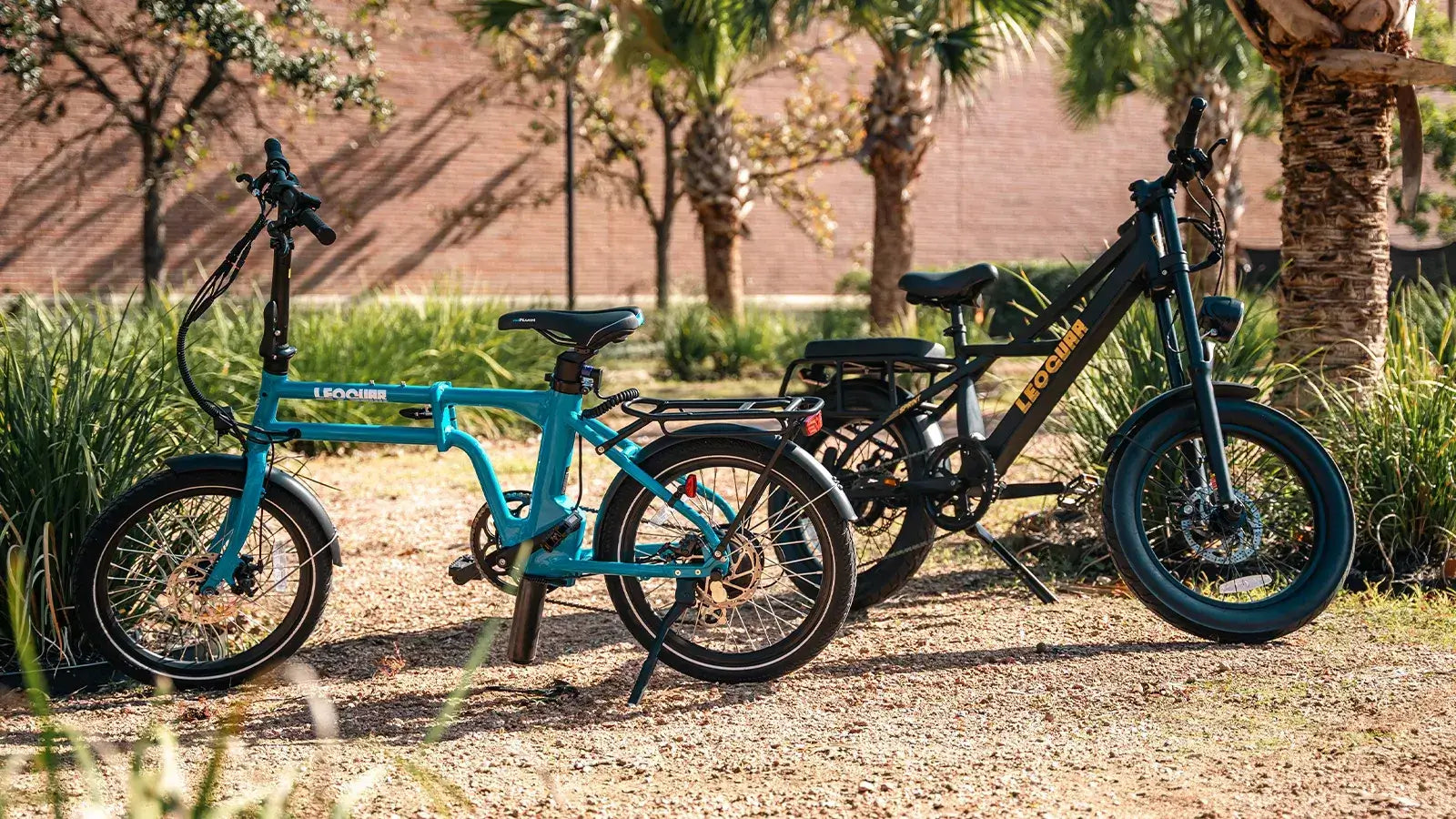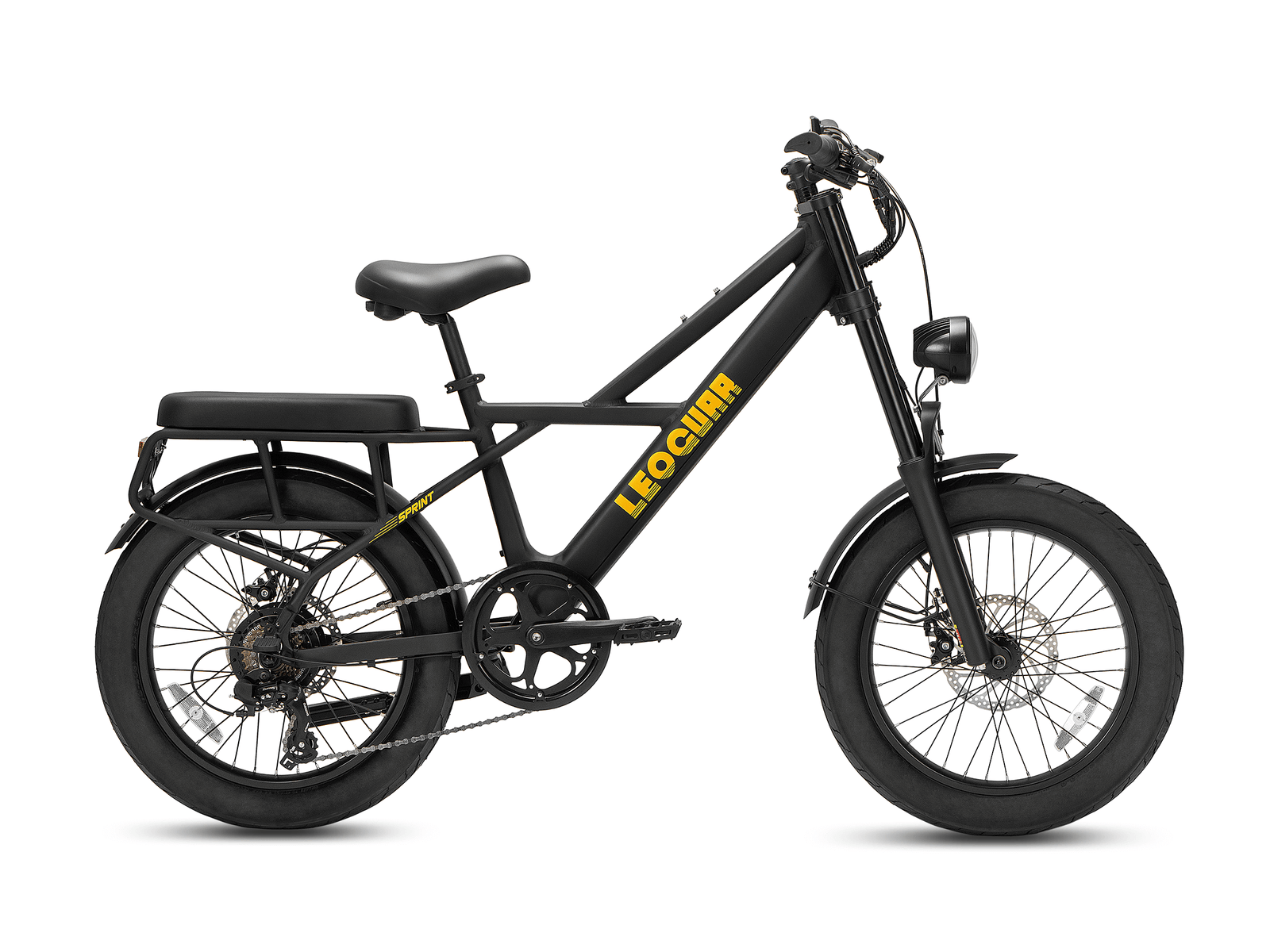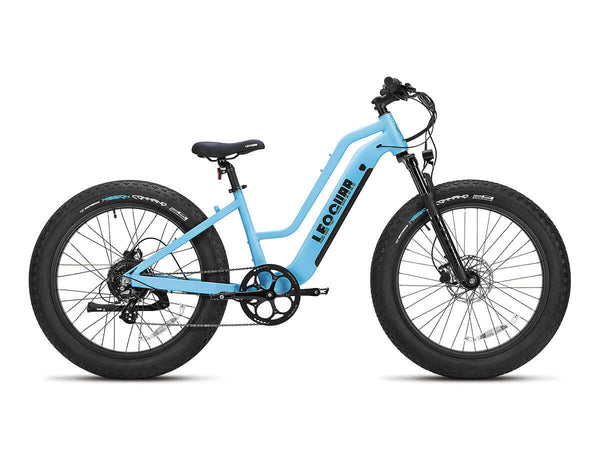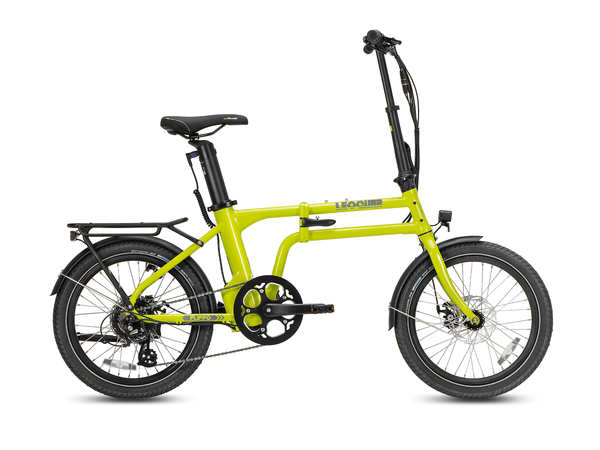
How Much Is an Electric Bike? 2025 Price Ranges and What Impacts Cost
So, you're asking: how much is an electric bike? It's a great question. The answer is confusingly broad, with prices ranging from a few hundred to over ten thousand dollars. We're here to clear up that confusion. In 2025, the market has settled into distinct tiers with clear price ranges. Here's the quick answer you're looking for:
- Budget-friendly e-bikes: $600 to $1,500
- Mid-range e-bikes (the sweet spot for many): $1,500 to $3,500
- Premium e-bikes: $3,500 to $8,000+
The rest of this guide will explain exactly why these price differences exist. We'll break down what you get for your money. We'll help you determine the right budget for your specific needs, and uncover the hidden costs every first-time buyer should know about.
The E-Bike Price Spectrum
To simplify the landscape, we can categorize e-bikes into three main tiers. This overview helps you quickly see what to expect from each price category and where you might fit in.
| Price Tier | 2025 Price Range | Typical Components & Features | Best For |
|---|---|---|---|
| Budget | $600 - $1,500 | Hub motor, external battery, mechanical disc brakes, basic drivetrain, heavier frame. | Casual riders, short commutes on flat terrain, and anyone testing the e-bike waters. |
| Mid-Range | $1,500 - $3,500 | Powerful hub or entry-level mid-drive motor, integrated battery, hydraulic disc brakes, quality drivetrain (e.g., Shimano), lighter aluminum frame. | Daily commuters, serious recreational riders, those tackling hills, and anyone seeking reliability and longevity. |
| Premium | $3,500+ | High-performance mid-drive motor (Bosch, Shimano, Brose), large integrated battery, top-tier components, carbon fiber frames, advanced tech (e.g., automatic shifting, integrated displays). | Enthusiasts, e-mountain bikers, long-distance tourers, and tech lovers seeking the best performance and lowest weight. |
Core Component Costs
An electric bike's price tag directly reflects its components. Understanding these key parts helps you look at a spec sheet and know exactly where your money is going. These four elements have the biggest impact on cost.
The Motor: Hub vs. Mid-Drive
The motor is the heart of your e-bike. Its type is a primary price driver.
Hub-Drive Motors sit in the hub of the rear or sometimes front wheel. These motors are simpler in design and more affordable than mid-drive systems. They function by "pushing" the bike along and provide a distinct feeling of being propelled forward. They are excellent for cruising on mostly flat ground. Most budget and many mid-range e-bikes use hub motors because they cost less to make and install.
Mid-Drive Motors sit in the middle of the bike frame where the pedals are. These motors apply power directly to the drivetrain, which includes the chain and gears. This results in a more natural, intuitive riding feel, almost like you just have super-powered legs instead of a motor pushing you. They are more complex, more efficient on hills, and offer better weight distribution and balance throughout the bike. You'll find them on most mid-range and almost all premium e-bikes. The jump from a hub-drive to a quality mid-drive system is one of the biggest price increases you'll see.

The Battery: Power and Safety
The battery is often the single most expensive component on an electric bike. Its cost depends on three factors: capacity, integration, and safety certification.
Capacity gets measured in Watt-hours (Wh). This number tells you how much energy the battery can store for your rides. A bigger Wh number means a longer potential range, but also a higher price and more weight to carry around. A 400Wh battery is fine for short trips around town, while 625Wh or 750Wh batteries are better for long commutes or hilly terrain.
Integration affects both looks and performance. On budget bikes, the battery is usually bolted onto the outside of the frame where everyone can see it. As you move up in price, batteries become elegantly integrated inside the frame's downtube where they're protected. This looks cleaner, protects the battery from damage, and contributes to better balance while riding.
Safety is non-negotiable when it comes to electric bike batteries. Reputable e-bike brands use high-quality lithium-ion cells from trusted manufacturers like Samsung, LG, and Panasonic. You should look for bikes where the entire electrical system is certified to UL 2849 standards. This is a comprehensive safety standard that tests the battery, charger, and controller together as one system. The U.S. Consumer Product Safety Commission strongly recommends this, as outlined in the CPSC safety standards for micromobility devices. A UL-certified bike is a key indicator of a brand that invests in quality and safety, which gets reflected in the price.
Frame and Fork
The material of the bike's frame dictates its weight, ride quality, and cost. Steel frames are heavy but durable and cheap, so you'll find them on some very low-cost e-bikes. Aluminum alloy is the industry standard, offering a great balance of strength, weight, and cost for most riders. Most budget, mid-range, and even some premium e-bikes use aluminum frames because they work well.
Carbon fiber is extremely lightweight, strong, and excellent at absorbing road vibrations for a smoother ride. It's also labor-intensive to manufacture, making it the most expensive option that's reserved for high-end performance and premium e-bikes.
A suspension fork at the front of the bike absorbs bumps and adds comfort to your ride. It also adds cost and weight to the overall bike. Rigid forks are lighter and cheaper, while high-performance suspension systems can cost thousands of dollars on their own.
Brakes and Drivetrain
These are the unsung heroes that control your speed and transfer power from your legs to the wheels. Cheaper e-bikes use mechanical disc brakes, which are operated by a steel cable and provide adequate stopping power for most situations. More expensive bikes use hydraulic disc brakes, which use fluid for a much stronger, more responsive, and more controlled braking feel. Given the extra weight and speed of an electric bike, hydraulic brakes are a highly recommended feature for safety.
The drivetrain includes the gears, shifter, chain, and cassette that help you pedal efficiently. Entry-level components get the job done, but they can be less durable and require more frequent adjustments from a bike shop. As you spend more, you get components from trusted brands like Shimano or SRAM that offer smoother, quicker, and more reliable shifting over thousands of miles of riding.
Beyond the Sticker Price
A spec sheet tells you what's on the bike, but it doesn't tell you how it feels to ride. The qualitative difference—the ride experience—is what your money really buys you when you choose an electric bike.
The Sub-$1,500 Experience
Bikes in this range are a fantastic entry point for new riders. It's important to manage expectations about what you'll get for this price. The power assist can sometimes feel a bit jerky or like an on/off switch rather than a smooth boost that matches your pedaling. The bikes are often heavy, making them a challenge to carry up stairs or lift onto bike racks. The brakes will stop you when you need them to, but they lack the sharp, confidence-inspiring bite of better brake systems. You should also anticipate more frequent tune-ups and maintenance visits to keep everything running smoothly. They are not "bad" bikes by any means; they simply involve trade-offs to hit an accessible price point.
The $1,500 - $3,500 Sweet Spot
This is where the magic happens for most electric bike riders. In this range, the entire experience becomes more refined and reliable for daily use. The power delivery from both high-quality hub motors and entry-level mid-drives is smoother and more intuitive, responding to your pedaling in a natural way that feels almost seamless. The bike feels more balanced and stable at speed, giving you confidence in traffic or on bike paths. The hydraulic brakes give you the confidence to navigate traffic and hills safely without worrying about stopping power. This is the price range where you feel you can truly rely on the bike for a daily commute without worrying about component failure or unexpected breakdowns. It's the zone where experts at Consumer Reports often point to as the ideal intersection of price and quality for most people's needs.
The $3,500+ Premium Experience
What do you get for spending more money on a premium electric bike? Refinement and peak performance that enthusiasts can feel in every ride. A premium e-bike feels like a seamless extension of your body rather than a machine you're operating. The high-end mid-drive motor is nearly silent and incredibly responsive to the slightest pressure on the pedals, giving you power exactly when and how you want it. The bike is noticeably lighter, making it more agile and easier to handle in tight spaces or when carrying it. Every component, from the shifters to the suspension, works in perfect harmony to create a riding experience that's hard to describe until you feel it. It's less about getting from point A to point B and more about the quality of the journey itself. This is for the enthusiast who values top-tier engineering, the lowest possible weight, and the absolute best ride feel money can buy.
E-Bike Types and Prices
The price of an electric bike also depends heavily on its intended use and design. A rugged e-mountain bike will naturally cost more than a simple city cruiser because of the specialized components it needs.
| E-Bike Type | 2025 Price Range | Primary Use & Features |
|---|---|---|
| Commuter/Urban | $1,200 - $4,000 | Designed for city streets. Often includes fenders, lights, and a rear rack. Focused on reliability and comfort. |
| Cruiser | $1,000 - $3,000 | Casual, comfortable riding. Features swept-back handlebars and a relaxed, upright riding position. |
| Folding | $800 - $3,500 | Portability for apartments, RVs, or mixed-mode commutes. Smaller wheels and a folding frame are key features. |
| Fat Tire | $1,200 - $4,000 | Oversized tires provide stability on sand, snow, and rough terrain. They offer a cushioned ride but are heavy. |
| E-Mountain (eMTB) | $2,500 - $10,000+ | Built for off-road trails. Features powerful mid-drive motors, advanced suspension, and durable components. |
| Cargo/Utility | $1,800 - $8,000+ | Designed to carry heavy loads, from groceries to kids. Features long, sturdy frames and powerful motors. |
Hidden Costs to Consider
Your investment doesn't end with the bike itself. To budget properly, you need to account for these additional costs that many first-time buyers forget about.
Battery replacement is a major long-term expense that every electric bike owner will face. An e-bike battery is a consumable item that will degrade over time, typically lasting 3-5 years or 500-1,000 charge cycles depending on how you use and care for it. A replacement battery from a reputable brand can cost between $400 and $900, making it the single largest long-term expense. You can extend battery life by storing it properly and not letting it fully drain, but replacement is inevitable.
Maintenance and tune-ups cost more for electric bikes than regular bikes. E-bikes put more stress on components like chains, cassettes, and brake pads than regular bikes because of the extra power and weight. Expect to replace these parts more often than you would on a regular bike. Plan for annual professional tune-ups, which can cost $100-$200, to keep your bike safe and running smoothly throughout the year.
Essential accessories are not optional if you want to ride safely and protect your investment. Budget at least $150-$300 for a high-quality lock (or preferably two different types), a certified helmet that fits properly, and a floor pump for maintaining tire pressure. Other useful accessories include pannier bags for carrying gear, a phone mount for navigation, and more powerful lights for visibility.

Finding Your Perfect E-Bike
With this knowledge, you can now determine the right budget for your specific needs and situation. First, assess your needs honestly. Be realistic about your primary use case. Is it a 3-mile flat commute to work or a 15-mile hilly recreational ride on weekends? Will you be carrying kids in a trailer or just a laptop in a backpack? Your answer dictates the bike type and the necessary motor and battery power you'll need.
Second, do your research beyond just comparing prices. Look into brand reputation and customer service quality. Do they have good customer support when things go wrong? Do they offer a solid warranty that actually covers meaningful problems? Read and watch reviews from professional testers and real-world owners who have put miles on the bikes.
The test ride is king when it comes to making your final decision. If possible, test ride a few different bikes in your price range. A bike can look perfect on paper with great specs, but the feel is what matters most for your daily enjoyment. Pay attention to the motor's responsiveness, the bike's balance and handling, and overall comfort during the ride. A local bike shop is an invaluable resource for this, even if you end up buying online.
The Final Verdict
So, how much is an electric bike that will meet your needs? For a reliable, safe, and enjoyable e-bike that will last for years of regular use, most people should plan to spend between $1,500 and $3,500 in 2025. This "sweet spot" offers the best balance of performance, quality components, and long-term value for the majority of riders.
You can certainly find functional bikes for less money. However, you'll be making compromises on weight, ride feel, and component longevity that might frustrate you over time. You can also spend much more for premium performance and cutting-edge technology if your passion and budget allow for those upgrades.
Ultimately, the best electric bike is the one that fits your needs and your budget without stretching your finances too thin. By understanding what drives the cost of different components and features, you are now equipped to look past the price tag and choose a bike that will bring you years of joy and utility. Happy riding, and welcome to the world of electric bikes.
Frequently Asked Questions
1. What is the average cost of a good electric bike?
A good electric bike typically costs between $1,500 and $3,500. This price range offers reliable components, decent battery life, and a quality riding experience that will last for years. While you can find cheaper options starting around $600, spending at least $1,500 usually gets you hydraulic brakes, a better motor, and more durable parts.
2. Why are electric bikes so expensive compared to regular bikes?
Electric bikes cost more because they include expensive components like lithium-ion batteries ($400-900), electric motors ($200-800), and controllers that regular bikes don't have. The battery alone often costs as much as an entire regular bike. Additionally, e-bikes need stronger frames, better brakes, and more durable drivetrains to handle the extra power and weight.
3. How long do electric bike batteries last and how much do replacements cost?
Electric bike batteries typically last 3-5 years or 500-1,000 charge cycles, depending on usage and care. Replacement batteries from reputable brands cost between $400 and $900. You can extend battery life by storing it in moderate temperatures, avoiding complete discharge, and charging it regularly even during storage periods.
4. Are cheap electric bikes under $1,000 worth buying?
Cheap electric bikes under $1,000 can work for casual, occasional use on flat terrain, but they come with trade-offs. Expect heavier weight, less refined power delivery, mechanical brakes instead of hydraulic, and potentially more maintenance issues. They're best for testing whether you like e-biking before investing in a higher-quality model.
5. What additional costs should I budget for beyond the bike price?
Beyond the bike cost, budget $150-300 for essential accessories like a quality lock, helmet, and pump. Plan for annual maintenance costs of $100-200, more frequent component replacements due to the extra power, and eventual battery replacement ($400-900) after 3-5 years. These hidden costs can add up to $1,000+ over the bike's lifetime.










































Leave a comment